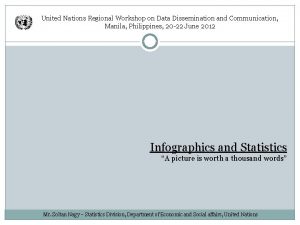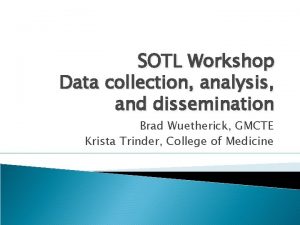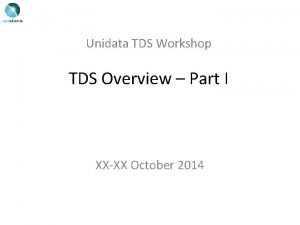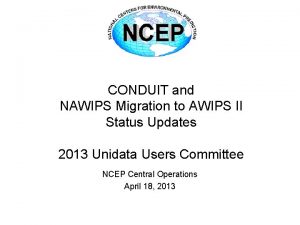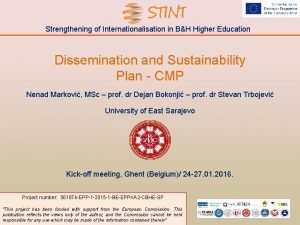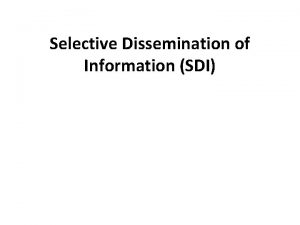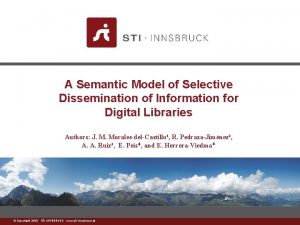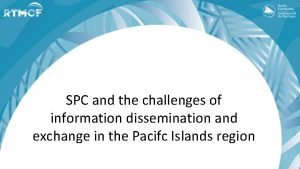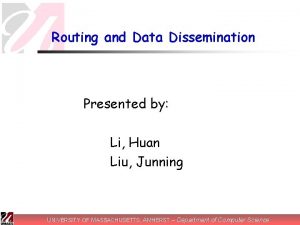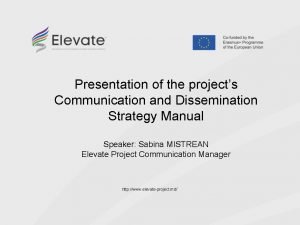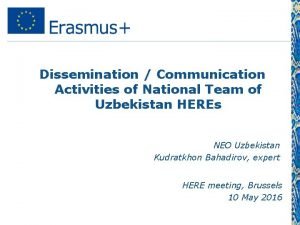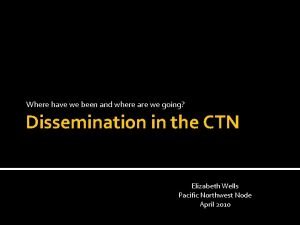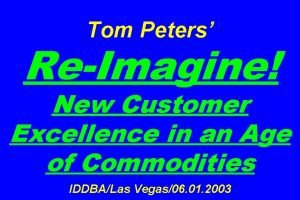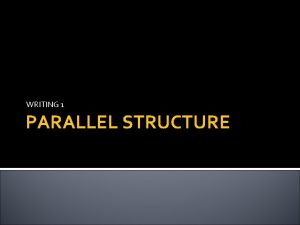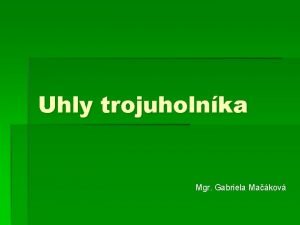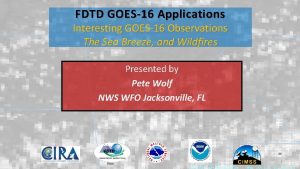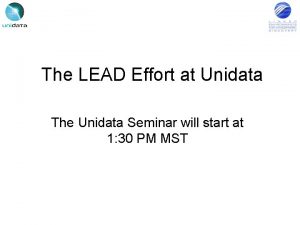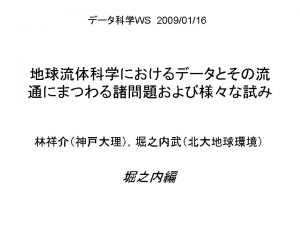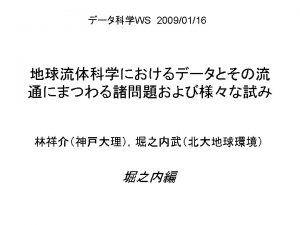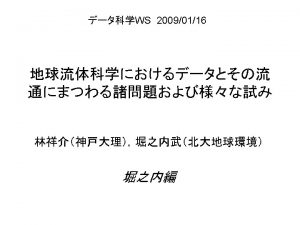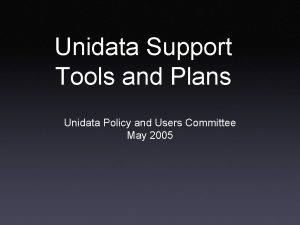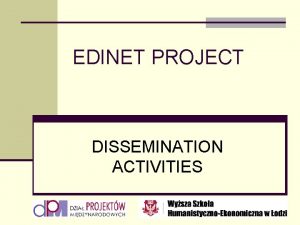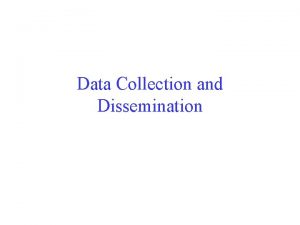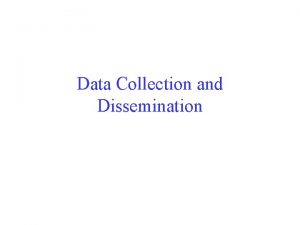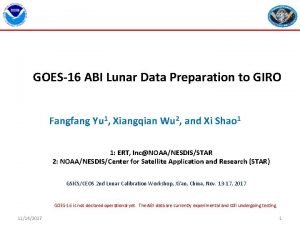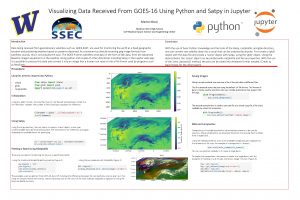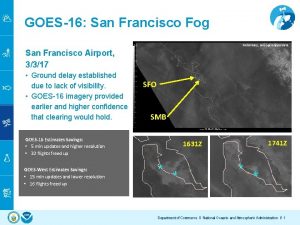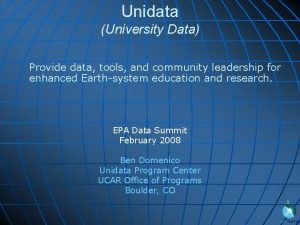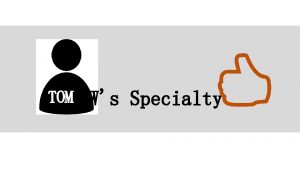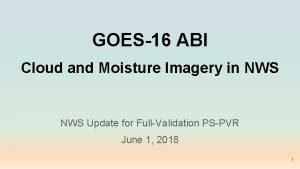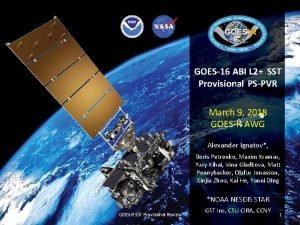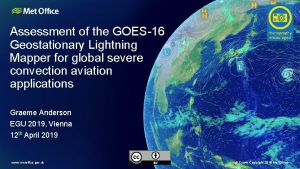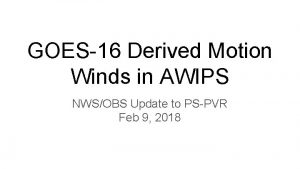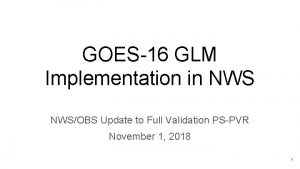GOES16 Data Dissemination in Unidata Tom Yoksas Unidata





















- Slides: 21

GOES-16 Data Dissemination in Unidata Tom Yoksas Unidata Program Center University Corporation for Atmospheric Research Boulder, Colorado USA http: //www. unidata. ucar. edu

Typical University Facilities in Late 1970 s Teletype for observations • Free 300 baud circuit from local WFO • Service A, C • hand-decoded data • hand-plotted maps, soundings Wet paper facsimile • Free facsimile service from local WFO • 2 -D maps • Satellite imagery • Populated the Weather Wall

Typical University Capabilities Today GFS Windspeed Isosurface and Temperature Cross Section

Unidata’s Birth Madison Workshop - 1983 v v v 80+ university participants Demonstration of mainframe Mc. IDAS Proposal to NSF to fund a UNIversity DATA system initiative within UCAR (Dutton, et. al. ) UNIDATA launched in 1984 - 2 employees Initial foci: v v v Broad menu of weather data including satellite imagery Local interactive analysis Communications to central mainframe Interactive operation of field programs Mantra: “Don’t do anything centrally that the universities themselves can do well”

UNIversity DATA systems - UNIDATA v v Funded primarily by the U. S. National Science Foundation Mission: To provide data services, tools & cyberinfrastructure leadership that advance Earth system science, enhance educational opportunities & broaden participation v At the Unidata Program Center, we v v Provide access to data (via push and pull systems) Develop open source tools and infrastructure for data access, analysis, visualization, and data management Support users of our technologies: faculty, students, and researchers Help to build, represent, and advocate for a community

Tools and Support Are Central v v Enhance and distribute software developed by others v Meteorological display and analysis tools from UW/SSEC (Mc. IDAS-X), National Weather Service (GEMPAK, AWIPS), Purdue (WXP), etc. v Remote access technologies: OPe. NDAP (U of RI, NASA, and others), ADDE (UW/SSEC) Develop software in-house v Widely used tools for manipulating scientific data (e. g. , LDM, net. CDF, UDUNITS, Met. PY, data decoders, etc. ) v Java-based tools (IDV Framework built on top of Vis. AD) for 2 D and 3 D visualization and next-generation, collaborative data analyses Build systems from the software we support v Internet Data Distribution (IDD) system v THematic Realtime Environmental Data Distributed Services (THREDDS) Data Server (TDS) Support the use of software by offering training, consultation, bug fixes, and upgrades

LDM and Internet Data Distribution System v v v v Local Data Manager (LDM) – one of largest distributed applications – put met departments on leading edge of Internet use Initiated in the mid-1990 s in response to weather-data ingest challenges: v Solar occultation data loss v Terrestrial interference v Campus beautification committees Event-driven network of cooperating Unidata Local Data Manager (LDM) servers interconnected by TCP/IP Ethernet Built to realize a communications goal laid out in the earliest Unidata planning documents (Cooper, 1985) v Active use of local-area and national network infrastructure v Allow for multi-way sharing of data including locally-held datasets Evolved in lock-step with national and international networking capabilities Profoundly changed how universities acquire and use (real-time) data Lowered costs and increased reliability of data delivery

Internet Data Distribution System GVAR, GRB LDM LDM NOAAPort LDM LDM Internet CONDUIT LDM LDM NEXRAD Sharing data from multiple sources using cooperating LDMs

Real-time Data Flows In the Beginning. . . “a dizzying volume of information – on the order of 100 MB/day, aggregate” (Davis and Rew, 1990) Early 2000 s LDM-6 Internet 2 bandwidth use > 35 TB/week

The Ongoing Data Deluge More Data and New Data Sources v v v v v NEXRAD Dual Polarization data GOES-R/S / JPSS MSG, MTG, METOP Global, coupled models at a grid spacing of 0. 25 -1 km, integrated for multi-decades NCAR Global WRF in Weather and Climate research NEXRAD Level II AMPS – Antarctic WRF New initiative More, More

Satellite Data Ingest NOAAPort GVAR GOES-S

Historic Data Flow Paradigm Unidata user running GEMPAK, Mc. IDAS, WXP Forecast Model Output Application specific protocols Satellite imagery Decoders Local data decoded into applicationspecific formats Decoders Weather station observations IDD Radar data Decoders Lightning, aircraft, GPSmet, etc.

Data Storage: Network Common Data Form net. CDF-3, net. CDF-4 • Stable, multi-platform, multilanguage data access since 1988 • Data model for multidimensional and structured scientific data • Set of APIs (C, Java, Fortran, C++, Perl, Ruby, MATLAB, Objective C, Tcl/Tk, …) for data access • Reference implementation for the APIs • Over 100 software packages provide net. CDF access • In use in over 100 countries net. CDF-3 Interface net. CDF-4 Library HDF 5 Library Net. CDF/HDF 5 Merger

Mc. IDAS Abstract Data Distribution Environment ADDE Assets v Access to real-time and archived datasets v GRID (model output, objective analysis, etc. ) v IMAGE (satellite imagery, radar, etc. ) v POINT data (surface observations, lightning, wind profiler, etc. ) v TEXT (free form text) v Access implemented by a variety of applications: Mc. IDAS-X/V, IDV, Matlab, IDL v One of the largest advanced application users of Internet 2 bandwidth v Longest lived demonstration of scientific programmatic remote data access ADDE Deficits v Limited data discovery v Limited metadata v Proprietary implementation: Unidata can provide Mc. IDAS-X to universities only

Thematic Real-time Environmental Distributed Data Services Data Server - TDS v THREDDS Data Server (TDS): v v v a web-based server which provides metadata and data access provides several data access protocols including OPe. NDAP and HTTP developed, distributed and supported by Unidata written in Java and easily implemented by the Tomcat server Free and open access to the data is now available to users around the world using standard web browsers and TDSenabled applications: v v v Integrated Data Viewer (IDV, Unidata) Mc. IDAS-V (Mc. V, UW/SSEC) Met. PY

AWIPS Environmental Data Exchange - EDEX • Main server for AWIPS • Qpid sends alerts to EDEX when data stored by the LDM is ready for processing • Qpid messages include file header information which allows EDEX to determine the appropriate data decoder to use • Default ingest server (simply named ingest) handles all data ingest other than grib messages, which are processed by a separate ingest. Grib server • After decoding, EDEX writes metadata to a Postgres database and saves processed data in HDF 5 via Py. PIES • A third EDEX server, request, feeds requested data to CAVE clients

IDV: GOES-16 Full Disk 0. 47 um VIS served by ADDE http: //www. unidata. ucar. edu/software/idv

IDV: AMPS model output served by TDS http: //www. unidata. ucar. edu/software/idv

IDV: ECMWF Ensemble model output from local data ECMWF Ensemble RH 50 th Percent Quantile for 20120416

Unidata GOES-16/17 Data Access Service Current Future IDD idd. unidata. ucar. edu iddb. unidata. ucar. edu Idd. meteo. psu. edu iddcc. ucr. ac. cr idd. aos. wisc. edu ADDE lead. unidata. ucar. edu atm. ucar. edu adde. ssec. wisc. edu AWS, Azure, Jetstream TDS thredds-test. unidata. ucar. edu thredds. ucar. edu AWS, Azure, Jetstream EDEX edex-cloud. unidata. ucar. edu AWS, Azure, Jetstream WEB atm. ucar. edu motherlode. unidata. ucar. edu adde. ssec. wisc. edu

Unidata Information Home. Page www. unidata. ucar. edu Support support@unidata. ucar. edu Software www. unidata. ucar. edu/software LDM www. unidata. ucar. edu/software/ldm net. CDF www. unidata. ucar. edu/software/netcdf IDV www. unidata. ucar. edu/software/idv AWIPS www. unidata. ucar. edu/software/awips 2 Mc. IDAS www. unidata. ucar. edu/software/mcidas TDS www. unidata. ucar. edu/software/current/tds
 Data dissemination
Data dissemination Data dissemination diagram
Data dissemination diagram Collection analysis dissemination of data
Collection analysis dissemination of data I.xxxx
I.xxxx Unidata awips
Unidata awips Unidata awips cave
Unidata awips cave What is a dissemination plan
What is a dissemination plan Features of selective dissemination of information
Features of selective dissemination of information Components of selective dissemination of information
Components of selective dissemination of information Challenges of information dissemination
Challenges of information dissemination Dissemination
Dissemination Dissemination
Dissemination Dissemination
Dissemination Dissemination
Dissemination Ctn dissemination library
Ctn dissemination library Go 910
Go 910 Symbols in the devil and tom walker
Symbols in the devil and tom walker Data charge tom peters
Data charge tom peters Tom has a beautiful wife a big house and
Tom has a beautiful wife a big house and A:nice to meet you b
A:nice to meet you b Vonkajšie uhly trojuholníka
Vonkajšie uhly trojuholníka Tom dayspring lipids
Tom dayspring lipids

